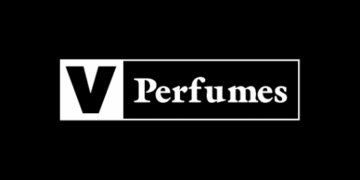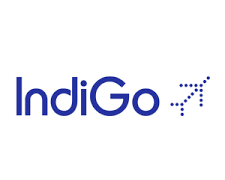Introduction
In today’s era of rapid technological evolution, blockchain technology stands out as a revolutionary concept with far-reaching implications across numerous industries. While commonly associated with cryptocurrencies like Bitcoin, blockchain’s capabilities extend well beyond digital coins. This blog aims to provide an in-depth introduction to blockchain technology, delving into its fundamental principles and exploring its diverse potential applications.
- Understanding Blockchain Technology
At its core, a blockchain functions as a decentralized and distributed digital ledger, recording transactions across multiple computers in a secure and immutable manner. Unlike traditional centralized databases, where a single entity controls data and its updates, a blockchain operates through a consensus mechanism involving all participants in the network.
The key parts of a blockchain are as follows:
Blocks: Transactions are grouped into blocks, which are then linked to each other cryptographically in chronological order, forming a continuous chain.
Decentralization: The ledger is replicated across numerous nodes (computers) in a network, ensuring that no single entity holds complete control.
Consensus Mechanism: Transactions are verified and added to the blockchain through consensus mechanisms like Proof of Work (PoW) or Proof of Stake (PoS).
Immutability: Once a block is added to the chain, altering it becomes nearly impossible due to cryptographic hashing, providing a high level of security and trust.
- Potential Uses of Blockchain Technology
Cryptocurrencies: The most renowned application of blockchain is the creation of cryptocurrencies like Bitcoin and Ethereum. These digital currencies utilize blockchain for secure, transparent, and tamper-proof transactions, revolutionizing the concept of currency.
Supply Chain Management: Blockchain can enhance transparency and traceability in supply chains by documenting each step of a product’s journey. This assists in preventing fraud, ensuring authenticity, and streamlining logistics processes.
Smart Contracts: These self-executing contracts automatically enforce predefined terms when specific conditions are met. Industries like real estate, insurance, and legal services can benefit from the efficiency and security of smart contracts.
Digital Identity Verification: Blockchain offers a secure and decentralized method of managing digital identities, mitigating the risks of identity theft and fraud through robust encryption.
Healthcare: Storing patient records on a blockchain ensures secure access to accurate medical histories by authorized parties while preserving patient privacy through encryption and permissioned access.
Voting Systems: Blockchain-based voting platforms enhance the security and transparency of elections by thwarting tampering and guaranteeing accurate vote tallying.
Financial Services: Beyond cryptocurrencies, blockchain has the potential to revolutionize traditional financial services, from cross-border payments to trade settlements, by reducing intermediaries and increasing operational efficiency.
Intellectual Property Protection: Artists, writers, and inventors can leverage blockchain to establish proof of ownership and safeguard their intellectual property rights in an immutable and transparent manner.
Energy Management: Blockchain can optimize decentralized energy grids, facilitating peer-to-peer energy trading and the integration of renewable energy sources, ultimately contributing to sustainable energy solutions.
Charitable Donations: By increasing transparency, blockchain ensures that charitable funds are utilized as intended, reducing administrative overhead, and fostering donor trust.
- Challenges and Considerations
While blockchain holds significant promise, several challenges merit consideration:
Scalability: Blockchain networks often grapple with scalability issues, leading to slower transaction processing times during periods of high demand.
Energy Consumption: Proof of Work blockchains can be energy-intensive, prompting concerns about their environmental footprint and driving the exploration of more sustainable consensus mechanisms.
Regulatory Uncertainty: The legal and regulatory landscape surrounding blockchain and cryptocurrencies varies by jurisdiction and is continually evolving, requiring adaptable frameworks.
Interoperability: The lack of interoperability between different blockchain networks can hinder their potential impact, necessitating solutions that enable seamless communication.
Exploring Blockchain Technology Further
Decentralized Finance (DeFi): One of the most significant trends in recent years is the rise of decentralized finance, or DeFi, which leverages blockchain to recreate traditional financial instruments in a more open, accessible, and efficient manner. DeFi platforms offer services like lending, borrowing, trading, and yield farming, all executed through smart contracts on the blockchain. This democratizes financial services, providing opportunities for individuals around the world to access financial tools without intermediaries.
Tokenization and Asset Ownership: Blockchain enables the tokenization of physical and digital assets. This involves representing real-world assets, such as real estate or artwork, as digital tokens on a blockchain. Tokenization has the potential to increase liquidity in traditionally illiquid markets, allowing fractional ownership and facilitating seamless transfers of ownership.
Data Security and Privacy: Traditional data storage and management systems are vulnerable to breaches and hacks. Blockchain offers a solution through its decentralized and encrypted nature. Businesses can use private blockchains to enhance data security within their operations. Moreover, individuals can have more control over their personal data and grant specific permissions to different entities, fostering a more secure digital ecosystem.
Decentralized Autonomous Organizations (DAOs): DAOs are organizations that operate based on pre-defined rules encoded into smart contracts. These rules are executed automatically, and decision-making is typically decentralized and community-driven. DAOs have the potential to revolutionize how organizations are governed, enabling more transparent and inclusive decision-making processes.
Blockchain in Gaming: The gaming industry has embraced blockchain for creating unique digital assets, secure ownership, and verifiable scarcity. Players can own in-game items as non-fungible tokens (NFTs), ensuring rarity and provenance. Additionally, blockchain enhances the concept of play-to-earn, allowing gamers to earn tokens for their in-game activities.
- Real-World Adoption and Challenges:
Blockchain’s potential is evident, but widespread adoption isn’t without hurdles. Interoperability remains a challenge, as different blockchains often operate in isolation. Solutions like cross-chain protocols are being developed to address this issue.
Energy consumption, particularly in Proof of Work blockchains, is another concern. However, the industry is actively exploring energy-efficient consensus mechanisms like Proof of Stake and other eco-friendly alternatives. Regulatory frameworks are still evolving, with some jurisdictions embracing blockchain and cryptocurrencies, while others remain cautious.
In conclusion, blockchain technology’s potential applications span a vast spectrum of industries. Its decentralized nature, security features, and transparency capabilities make it an attractive solution for various challenges. While challenges such as scalability and regulatory uncertainty persist, ongoing research and development are paving the way for solutions.






Leave Comment